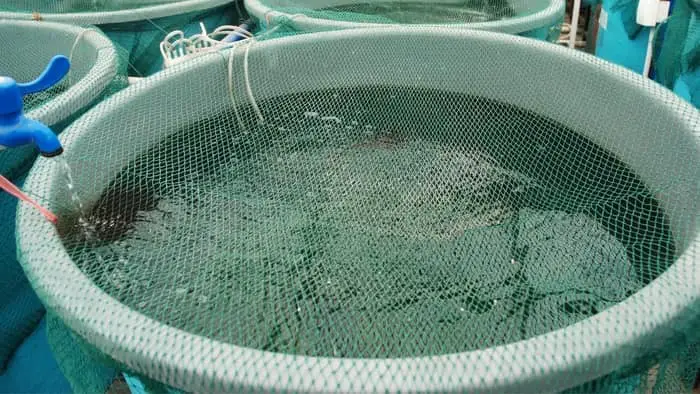Last Updated on March 26, 2022 by Marco C.
Do you know how to use an API ammonia test chart? It is a very important tool for aquaponics and hydroponics.
This article will teach you everything you need to know about using an API ammonia test chart and why it is important. Ammonia levels are a very important aspect to monitor in your fish tank.
If your ammonia levels get too high, your fish will die. It is that simple. This is why they have created special test kits that allow you to monitor ammonia levels on a weekly basis.
Ammonia is also known as NH3, a form of nitrate that is naturally occurring in your fish tank. There are many different sources of NH3.
Not only will this article teach you how to use an API ammonia test chart, but it will also explain ways to keep NH3 levels low in your tank. This skill is crucial in having a successful aquaponics system.
Using the test kits is not very difficult and they are not very expensive to buy. The kits are readily available at most aquarium shops around the world.
So what are you waiting for? Keep reading now to start learning. After this, you should be confident in running a smooth aquaponics fish tank.
All About Ammonia Testing Kits
An ammonia test kit is a simple device designed to help people monitor their ammonia levels. Before we get into the details of the test kits, let’s explore ammonia as a concept. It is important to understand how Ammonia occurs and why it is dangerous for your fish.
Nitrites and Ammonia happen when organic and natural materials are broken down inside the water. Some sources of this organic material are fish feces, plant particles, or uneaten food pieces. As these decompose, it becomes a safer chemical for your tank.
When the organic material first shows up in your tank it is in the form of Ammonia. Ammonia is extremely toxic for plants. Once it breaks down, the Ammonia turns into Nitrite.
Nitrite is perfectly fine to be in your tank. So after it goes through this process, you have nothing to worry about.
It is good to understand the biological process of these bacterias. When you have a good knowledge of the process, you can better control it in their tank.
At the beginning it is Ammonia, then it changes to Nitrites, and then it goes into a usable form of Nitrates. These nitrates are good for your plants and help them grow!
However, at all times Nitrites and ammonia are considered very dangerous to fish.
Every single aquatic system goes through this process. It is completely natural. There is no way to stop it from happening. But, you can control the levels.
It is important to keep the Ammonia levels low in order for your fish to survive. The best way to do this is to keep your tank clean!
Learn more about: Your Step By Step Guide To Unionized Ammonia Calculation
If Nitrites exceed a certain level in your tank, your fish are affected by:
- Less oxygen is available for the fish. This will make it harder for them to breathe and function properly
- The immune system in your fish can become weak due to limited cell growth. You can see that your fish have a lower appetite and very little energy
- Diseases can spread faster and more frequently.
Ammonia Testers To The Rescue
It is not always easy to notice an increase in ammonia in your tank. This is why humans invented ammonia testers. These can be used on a day-by-day basis to anticipate a problem before it happens.
If you notice that the NH3 levels are going up, you are able to take early action. Testing on an every other day basis is especially important at the beginning of your tank before a biological filter is established.
Usually, it takes about 4-6 weeks for a biological filter to become strong enough to process bacteria effectively. During this period, pay careful attention to ammonia levels.
Using an API ammonia test chart and kit is super easy. It is very similar to using an API PH test kit. There is a small plastic container inside the kit which can be reused.
This plastic container is used to hold your water sample. You will need to take a 5ml sample of tank water. Put it into the container.
Make sure that the container is completely cleaned and dried before adding your sample. This will ensure that no outside contaminants will skew the data.
Once the water sample is in the container, you need to add 8 drops of Ammonia Test Solution #1 and shake the water. After that, add 8 drops of Ammonia Test Solution #2 into the same container.
At this point, the water will begin to change color. This is when you need to use the Api ammonia test chart. This chart is simply a colored chart. Each color is related to certain parts per million of NH3.
Compare the color of the water to the chart to see which one it matches with. Be sure to do this in a well-lit room or in sunlight.
You need to wait 5 minutes for the water to change color completely before using the Api ammonia test chart.
Read more about: Does Ammonia Kill Plants
Understanding The Results Of Your Api Test Chart
According to the API instruction manual, “In an established aquarium/ pond, the ammonia level should always remain at 0 ppm (mg/L); any level above 0 can harm fish.” So, if you have any reading above 0, it is recommended to take action.
The best and most simple way to reduce nitrites in your fish tank is to keep your system CLEAN. If your tank gets too dirty without any filtration, the ecosystem will quickly become imbalanced and unsuitable for fish to live.
An easy way to keep your water clean is to replace the water on a weekly basis. Changing your water will continually give your tank a fresh start and remove any excess debris that has compiled over the week.
As soon as you get a reading above 0, try to change the water. Continue to measure the ammonia levels using an Api ammonia test chart, to make sure the problem is solved.
Hopefully, now you know how to use an Api ammonia test chart! It is not very difficult. Make sure to always have on one hand if you are doing aquaponics.
Feel free to comment and ask questions below!
FAQs
How to reduce Ammonia Nitrites in your tank?
The best and most simple way to reduce nitrites in your fish tank is to keep your system CLEAN. If your tank gets too dirty without any filtration, the ecosystem will quickly become imbalanced and unsuitable for fish to live.

Candace is an aquaponics expert with over 5 years of experience in the field. She has a degree in environmental science from the University of California, Berkeley and a degree in aquaponics from the University of Florida. She is passionate about sustainable agriculture and has a deep knowledge of aquaculture and hydroponics. She has worked on numerous projects and has been involved in the development of aquaponic systems and fish farms. She also has experience in designing and constructing aquaponic systems. With her expertise, Candace is able to advise clients on the most effective and efficient way to construct and manage their aquaponic system. She is an active member of the aquaponic community, often speaking at conferences and seminars. Candace is dedicated to helping others understand the importance of aquaponics, and she is a strong advocate for sustainable food production.

